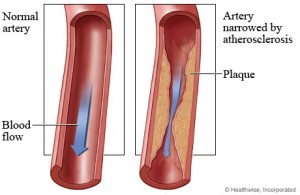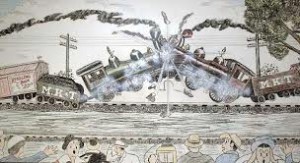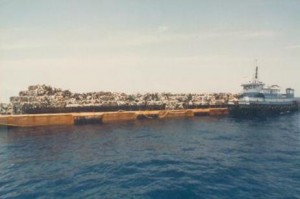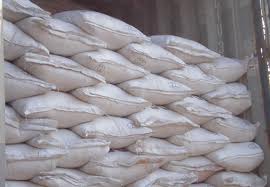Archive for May 2013
Get ‘Em While They Last….
Particulate Matter (PM) Pollution Linked to Hardening of the Arteries
 Residents who live in more polluted parts of their town may have as much as a 2% greater risk of strokes and heart attacks than people who live in areas with cleaner air. That's the conclusion of a new study that specifically links PM 2.5 – that is soot or particulate matter that is 2.5 microns or less in size – to accelerating atherosclerosis, or hardening of the arteries.
Residents who live in more polluted parts of their town may have as much as a 2% greater risk of strokes and heart attacks than people who live in areas with cleaner air. That's the conclusion of a new study that specifically links PM 2.5 – that is soot or particulate matter that is 2.5 microns or less in size – to accelerating atherosclerosis, or hardening of the arteries.
Researchers from the University of Michigan School of Public Health and the University of Washington followed 5,362 people between the ages of 45 and 84 from six regions in the U.S.: Baltimore, Maryland, Forsyth County, North Carolina, Los Angeles County, California, Northern Manhattan and Southern Bronx, New York and St. Paul, Minnesota.
After accounting for behaviors like smoking, which can independently affect heart disease risk, they found that the thickness of the carotid arteries that supply blood to the head and neck increased by 14 µm each year. Participants who were exposed to higher levels of air pollution in their home had blood vessels that thickened faster compared to others living in their area with lower exposure levels.
Thickening of blood vessels is a sign of hardening of the arteries, as inflammation lures in clotting factors and other immune agents to patch up worn areas; as these compounds build, the vessels stiffen and thicken, losing their ability to flex and adjust to the varying levels of pressure created by the blood flow.
High levels of a fine air pollutant called PM2.5 was specifically linked with faster thickening of the inner two layers of the carotid artery, a vessel that serves as a sentinel for the state of other arteries throughout the body. However, the study also showed that if levels of PM2.5 were reduced in the participants’ homes, the pace of thickening slowed.
Latest Stop in Slo-Mo Exide Train Wreck: Thursday 5-7pm
 Coming down the hill from the west is a freight train full of woe for Exide. It's carrying at least five shareholder lawsuits aimed at the company for not disclosing its environmental liabilities, including those stemming from the operation of its Vernon, California smelter. That would be the same smelter California state officials shut down due to leaking lead waste and an unacceptable cancer risk to over 100,000 local residents. On board is a "restructuring specialist" who is supposed to see the company through its second bankruptcy in a decade. As of last week, Exide stock was selling for a cool 75 cents a share. The whole company is about to shoot off the rails.
Coming down the hill from the west is a freight train full of woe for Exide. It's carrying at least five shareholder lawsuits aimed at the company for not disclosing its environmental liabilities, including those stemming from the operation of its Vernon, California smelter. That would be the same smelter California state officials shut down due to leaking lead waste and an unacceptable cancer risk to over 100,000 local residents. On board is a "restructuring specialist" who is supposed to see the company through its second bankruptcy in a decade. As of last week, Exide stock was selling for a cool 75 cents a share. The whole company is about to shoot off the rails.
Meeting it head-on coming from the east is the Exide's smelter site in Frisco, over 100 acres and fifty years of sloppy handling and disposal of hazardous lead, arsenic, cadmium, dioxin and other poisons. There are "pre-RCRA" sites aplenty – meaning they were there before any regulations could catch up with them, as well as more recent disasters like the illegal burying of hazardous waste in a non-hazardous landfill. Just last week the City of Frisco released a preliminary environmental assessment of the LEAST-contaminated parts of the smelter that revealed new potential contamination as well as the fact that the entirety of Stewart Creek had been re-routed around the smelter in 1964 – leaving the original channel underneath the MOST contaminated part of the smelter. Moreover, even though the smelter closed in November of last year, it's been routinely causing high levels of lead air pollution from the demolition and closure operations going on.
Caught in the middle are Frisco residents who just want to live without a lot of lead in their air for awhile, and don't want to see a new Superfund Site in their town. The state's Texas Commission in Environmental Quality is in its usual "Yes Man" role to industry and seemingly finds no fault in any of Exide's plans to leave pits and landfills full of smelter waste in Frisco permanently. Having made its sweetheart deal to close the smelter, the City of Frisco has taken a back seat to the company and TCEQ when it's come time to figure out how best to clean-up the site.
Thursday night Exide is sponsoring another one of its "community meetings" in which the community is invited to come hear company representatives put nice spin on everything as well as duck questions about its financial responsibilities and long-term plans. It's no substitute for a real public meeting but its the only game in town for Frisco residents who don't want to see a toxic waste dump site remain downtown.
Exide Community Meeting 5 to 7 pm Frisco Depot 6321 Paige Street – behind Babe's.
How an Orphaned NYC Garbage Barge Began the Recycling Boom in America
 There's a new short video series called "Retro Report" that the New York Times is producing. Its first effort is about the wayward voyage of the Mobro 4000 – not a new video game, but a six-million ton floating pile of New York City garbage that captured the nation's attention in 1987. 12 minutes of interesting history on how we got here from there.
There's a new short video series called "Retro Report" that the New York Times is producing. Its first effort is about the wayward voyage of the Mobro 4000 – not a new video game, but a six-million ton floating pile of New York City garbage that captured the nation's attention in 1987. 12 minutes of interesting history on how we got here from there.
A Jim Schutze Primer on the CDC and Aerial Spraying
 You can't tell the players without a program. Read this take on the recent flare up between John Wiley Price and Dallas County Judge Clay Jenkins on the issue of aerial sprying for West Nile. Schutze is the only writer using the term "endocrine disrupter" in connection with what the authorities want to spray and who's trying to follow this issue BEFORE the summer arrives….
You can't tell the players without a program. Read this take on the recent flare up between John Wiley Price and Dallas County Judge Clay Jenkins on the issue of aerial sprying for West Nile. Schutze is the only writer using the term "endocrine disrupter" in connection with what the authorities want to spray and who's trying to follow this issue BEFORE the summer arrives….
Why Is a Local Cement Plant Storing 45 Tons of Ammonium Nitrate in its Limestone Quarry?
 According to today's Dallas Morning News, the Holcim cement plant in Midlothian is storing 45 tons of ammonium nitrate, the same substance that authorities believe caused the West blast, in its limestone quarry. Apparently no DMN reporter asked what a cement plant was doing with so much "fertilizer" on its premises. Using it as another weird "additive?" Storing it for some farmer friends? Why Holcim and not TXI or Ash Grove? Plus the DMN reporters apparently never even visited the site and described the area as void of houses and schools. In fact, Downwidners' founder Sue Pope and others live just north of the Holcim quarry – close enough for them to be affected by the blasts of rock when the cement plant mines the limestone in that same quarry. And there are at least two schools within a mile of the place.
According to today's Dallas Morning News, the Holcim cement plant in Midlothian is storing 45 tons of ammonium nitrate, the same substance that authorities believe caused the West blast, in its limestone quarry. Apparently no DMN reporter asked what a cement plant was doing with so much "fertilizer" on its premises. Using it as another weird "additive?" Storing it for some farmer friends? Why Holcim and not TXI or Ash Grove? Plus the DMN reporters apparently never even visited the site and described the area as void of houses and schools. In fact, Downwidners' founder Sue Pope and others live just north of the Holcim quarry – close enough for them to be affected by the blasts of rock when the cement plant mines the limestone in that same quarry. And there are at least two schools within a mile of the place.
We've got an inquiry pending with Holcim representatives asking about the presence of the chemical on site. If we get an answer we'll let you know. Meanwhile, we're left to wonder why it took a disaster in West to bring this strange development to light.

